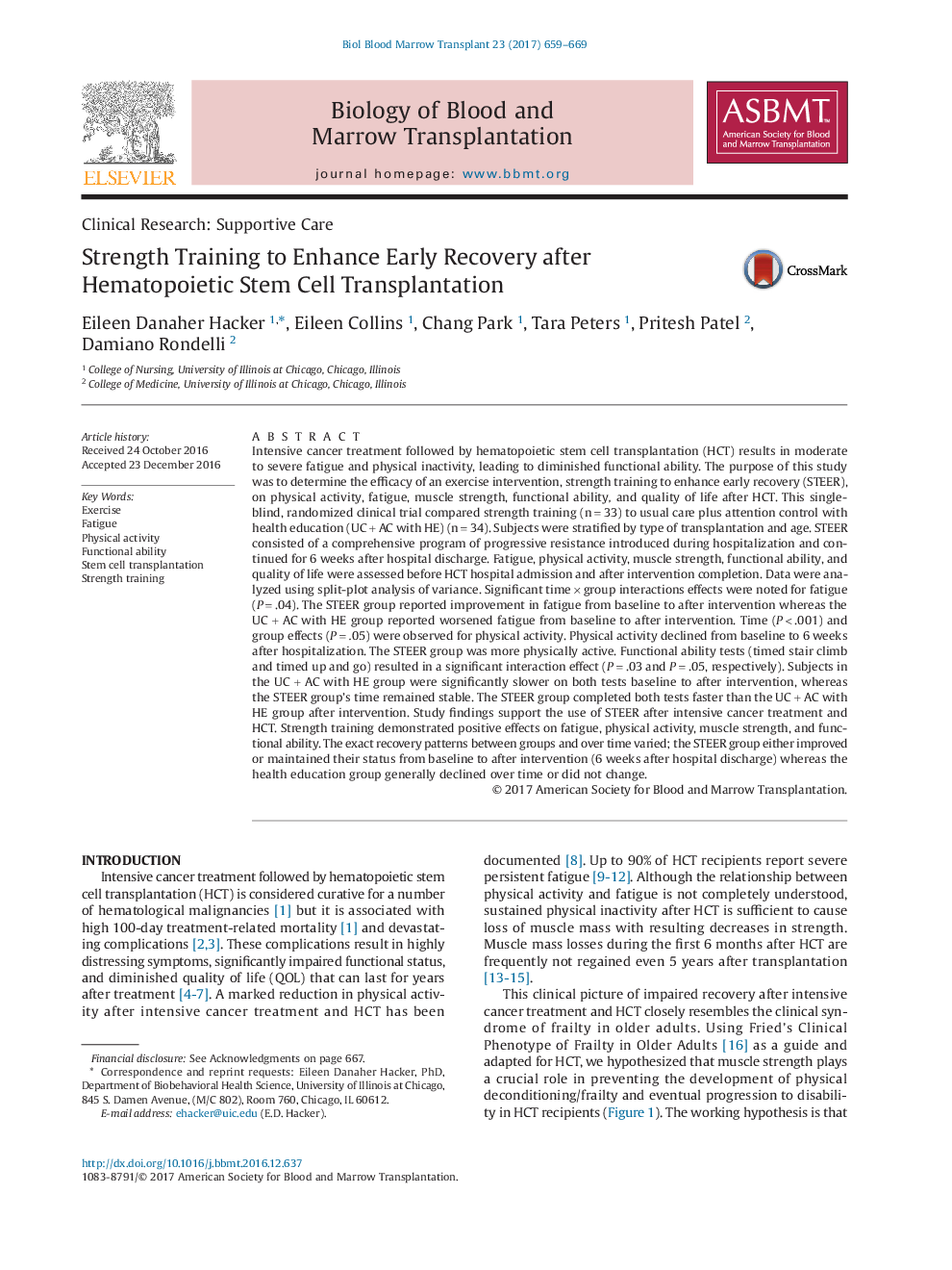| کد مقاله | کد نشریه | سال انتشار | مقاله انگلیسی | نسخه تمام متن |
|---|---|---|---|---|
| 5524423 | 1546242 | 2017 | 11 صفحه PDF | دانلود رایگان |
- The strength training intervention (STEER) enhanced early recovery after hematopoietic stem cell transplantation
- STEER reduced fatigue and maintained or improved muscle strength and functional ability
- Subjects assigned to STEER demonstrated high intervention compliance (83%)
Intensive cancer treatment followed by hematopoietic stem cell transplantation (HCT) results in moderate to severe fatigue and physical inactivity, leading to diminished functional ability. The purpose of this study was to determine the efficacy of an exercise intervention, strength training to enhance early recovery (STEER), on physical activity, fatigue, muscle strength, functional ability, and quality of life after HCT. This single-blind, randomized clinical trial compared strength training (nâ=â33) to usual care plus attention control with health education (UC + AC with HE) (nâ=â34). Subjects were stratified by type of transplantation and age. STEER consisted of a comprehensive program of progressive resistance introduced during hospitalization and continued for 6 weeks after hospital discharge. Fatigue, physical activity, muscle strength, functional ability, and quality of life were assessed before HCT hospital admission and after intervention completion. Data were analyzed using split-plot analysis of variance. Significant time à group interactions effects were noted for fatigue (Pâ=â.04). The STEER group reported improvement in fatigue from baseline to after intervention whereas the UC + AC with HE group reported worsened fatigue from baseline to after intervention. Time (Pâ<â.001) and group effects (P = .05) were observed for physical activity. Physical activity declined from baseline to 6 weeks after hospitalization. The STEER group was more physically active. Functional ability tests (timed stair climb and timed up and go) resulted in a significant interaction effect (P = .03 and P = .05, respectively). Subjects in the UC + AC with HE group were significantly slower on both tests baseline to after intervention, whereas the STEER group's time remained stable. The STEER group completed both tests faster than the UC + AC with HE group after intervention. Study findings support the use of STEER after intensive cancer treatment and HCT. Strength training demonstrated positive effects on fatigue, physical activity, muscle strength, and functional ability. The exact recovery patterns between groups and over time varied; the STEER group either improved or maintained their status from baseline to after intervention (6 weeks after hospital discharge) whereas the health education group generally declined over time or did not change.
Journal: Biology of Blood and Marrow Transplantation - Volume 23, Issue 4, April 2017, Pages 659-669
